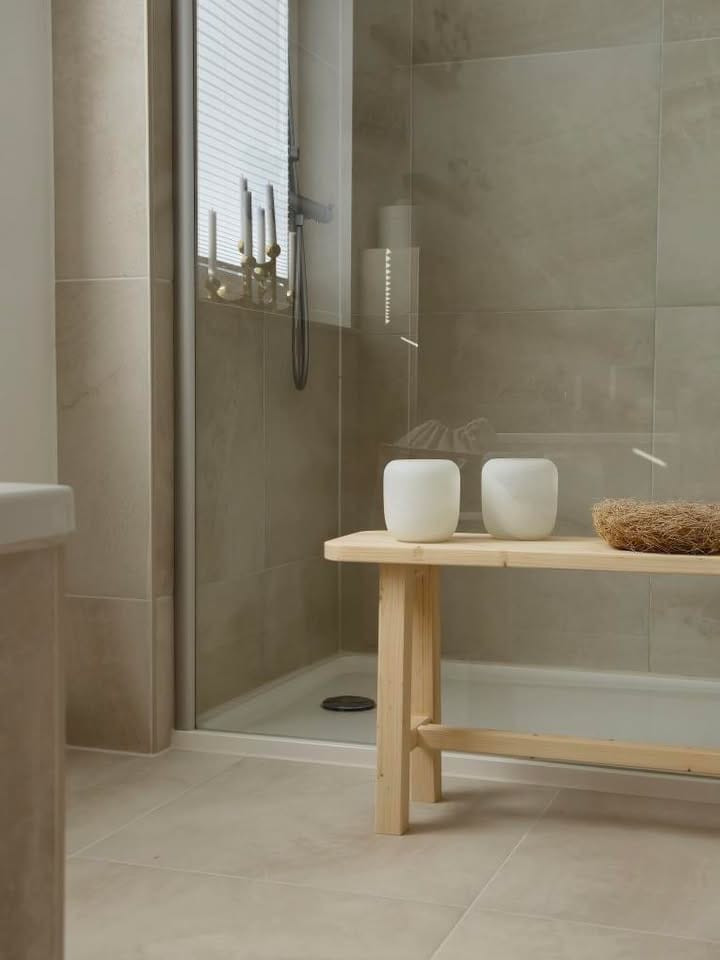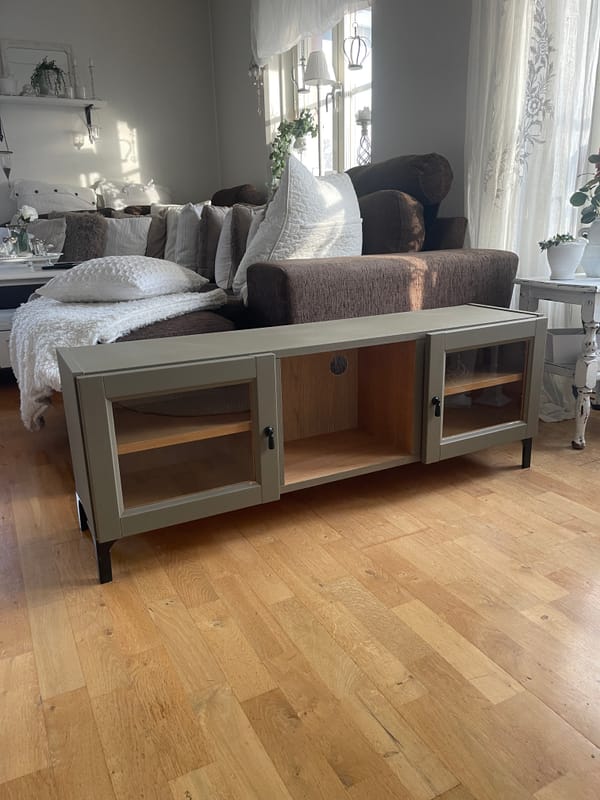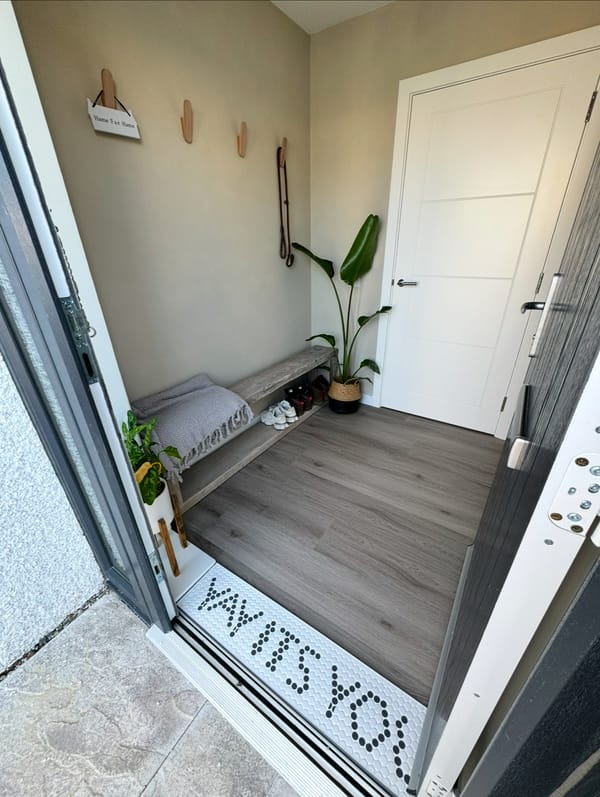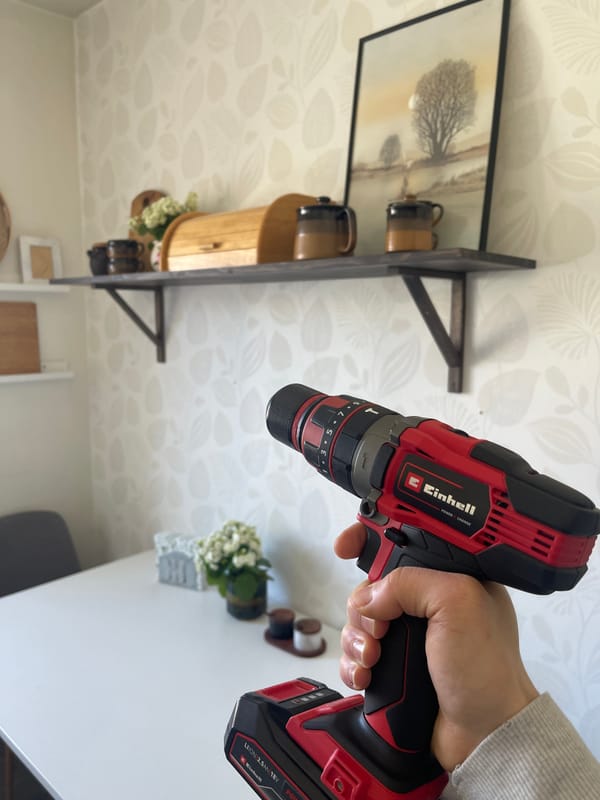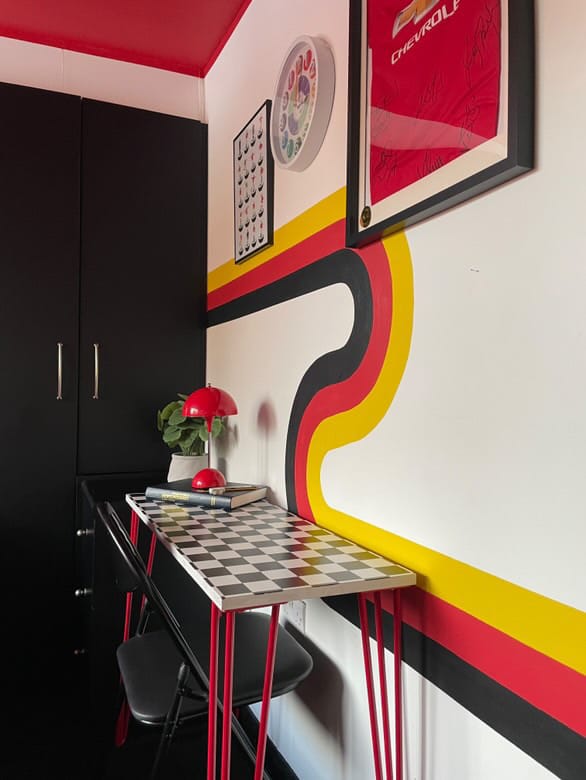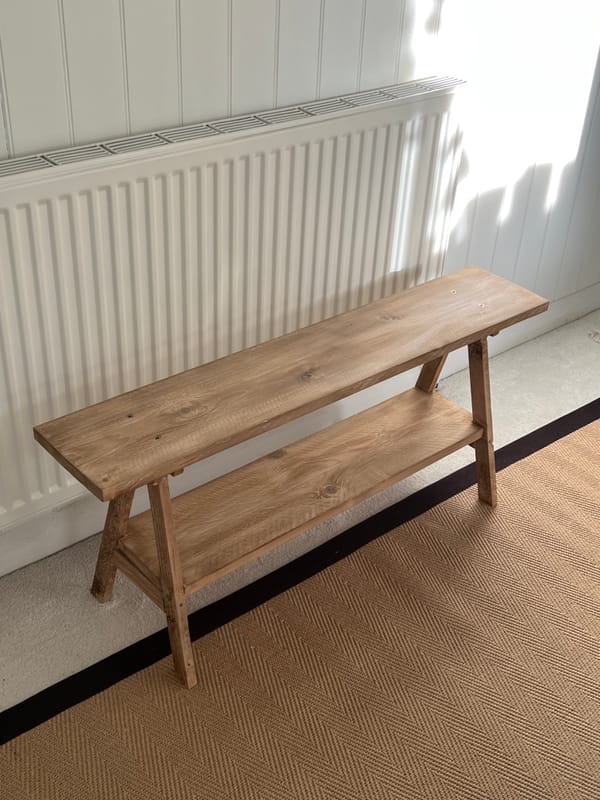Creating your own bench is a rewarding and budget-friendly way to add functional seating to your home. With just a few pieces of spruce timber and some basic tools, you can craft a sturdy and stylish bench that complements any space. This DIY project is simple, making it ideal for beginners while still being customizable for those with more woodworking experience. Follow this step-by-step guide to build your own bench with ease.
Materials
- Spruce glulam panel (800x300x28mm)
- Spruce squared timber, planed (44x44x2000mm)
- Spruce squared timber, planed (34x34x2000mm)
Step-by-Step Guide
Step 1. Cutting the Seat Panel
First, we cut a 5cm strip from the glulam board using a hand-held circular saw. This reduces the width of the glulam panel to 250mm. To shape the corners, we used a cup to draw curves on all four corners, then roughly sawed them off with a jigsaw and refined the edges with a disc sander.
Step 2. Preparing the Legs and Supports
Next, we prepared the legs by cutting four pieces from the 44x44mm squared timber. Each leg measures 420mm in length and has a 3-degree angle on both ends, ensuring a comfortable seating height of 450mm. We also cut two leg connectors and a crossbar from the 34x34mm squared timber. The leg connectors measure 100mm and 125mm each, with both ends cut at a 3-degree angle. The crossbar is 530mm long, positioning the legs 100mm inward from the seat edges. To allow for concealed assembly, we added pocket holes to the leg connectors and crossbar from the bottom.
Step 3. Assembling the Bench Frame
For the assembly, we first attached the two upper leg connectors to the underside of the seat using screws. Then, we secured the legs to the connectors with both glue and screws through the pocket holes.
Step 4. Securing the Lower Connectors and Crossbar
Finally, we attached the lower leg connectors to the legs at a height of 110mm from the ground, again using pocket holes. The crossbar was glued between the lower leg connectors and additionally screwed from below for extra stability.
With just a few cuts and careful assembly, you can build a sturdy and stylish DIY bench that suits any space. This project is a fantastic way to practice basic woodworking skills while creating something practical and beautiful. Whether for an entryway, dining area, or outdoor setting, this handmade bench will provide both function and charm for years to come.
Happy building!

Creator: Geraldine
Instagram:@casa.geraldine



